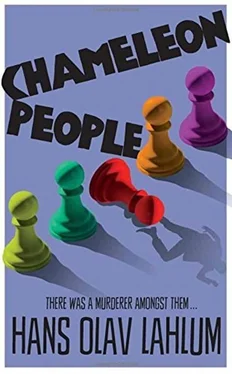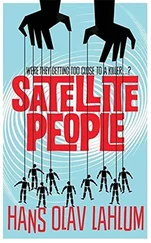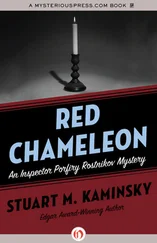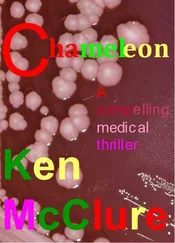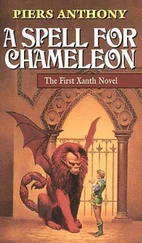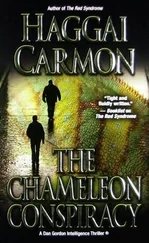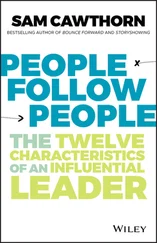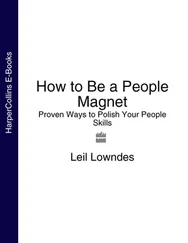Reluctantly, I gave in to the fear and turned around without warning just as I reached the front door.
There was nothing to see. But as I went in I found myself wondering if perhaps there had been someone there before I turned around. On my way up the stairs, I chastised myself for not having turned around earlier, and for allowing my uncertainty about the case to tip into fear.
Once inside my flat, I realized that I still wasn’t tired. I stood alone by the window and looked out at the night.
The street below was empty. And yet I could see someone down there. Images of the boy on the red bicycle, who, two evenings before, had pedalled so frantically up the hill in front of the house, were still burned in my mind.
Even though there was much that was still unexplained, it now seemed clear that the boy had been innocent of murdering Per Johan Fredriksen and that he had cycled here in desperation because he trusted that I would discover the truth. The boy had wanted to give me his simple statement: that he was innocent, that he had only tried to help, and that Fredriksen had been dead when he went back. And it had all been true.
But there was also a sense that the boy on the red bicycle had in some way let me down, first by his lack of cooperation and then by taking his own life. Although of course, the stronger feeling was that I had let him down and betrayed the trust he had given me by failing to recognize his innocence in time to save his life.
I had a light snack alone at twenty to eleven. I felt pretty miserable and thought about the case as I ate two slices of bread and cheese in the kitchen, but was no closer to solving either the possible murder from 1932 or the murder from 1972.
At five to eleven, I went back into the living room. I sat there for several minutes looking at the telephone. The temptation to call my secret advisor, Patricia, only got stronger the longer I sat there. I was sure that Patricia would immediately make connections in the case that I could not see, if she was willing to help me. However, I wasn’t even convinced that she would want to help me. It was as though Patricia’s shadow now eclipsed the case for me. It felt like I had to phone her to find out whether she was willing to help, or if I was on my own.
I thought about the boy on the red bicycle and my meeting with his mother, and came to the conclusion that I should ring Patricia for their sakes. I still knew the number to the telephone on her table by heart. I was suddenly absolutely certain that she was still awake, sitting by the telephone in her library.
Twice I reached out to pick up the phone. The first time, I pulled my hand back before it even touched the receiver and the second time, I dialled the first two numbers before I put it down again. A picture of Miriam appeared and stood between me and the telephone. Miriam had not wanted me to contact Patricia this time and had really done her best to help me herself.
It was a horrible feeling; it would seem as if I lacked confidence in my fiancée if I now asked if I could call Patricia. But at the same time it felt like it would be a betrayal, almost treachery, if I were to ring Patricia without having spoken to Miriam about it first. So I sat there stewing over the dilemma. Then I made a decision and reached out to pick up the phone and ring Patricia.
But the telephone beat me to it: it started to ring while my hand was still in the air. As soon as I heard it ring, I knew who it was – and I was right.
Miriam was calling from a telephone box at her student accommodation. Her voice trembled slightly when she spoke: ‘I’ve tried to call you several times this evening without any answer. I’m so glad that you are all right. Is there any news about the case?’
It felt as though she was asking me if I had been to visit Patricia. And I immediately regretted having tried to call her.
So I quickly told her that I had been to see the Ramdals and that there was some new information, but I could tell her more when we next met.
Miriam sounded pleased to hear this and said that she could leave the library a couple of hours earlier tomorrow so that we could have an early supper together before she went to her evening meetings. This was a rare offer coming from her, so I agreed without hesitation. She promised to be here at four and would wait if I was later. I cheerfully asked her to take with her the book on the history of the German language, and she equally cheerfully said that she would never dream of going anywhere without it.
Her coins and our conversation came to an end at twenty-five past eleven. We felt closer again. I was touched by my Miriam’s interest and found her curiosity charming. So I stopped debating with myself whether to call Patricia or not. In any case, it was by now far too late for any more phone calls or visits today. I suddenly felt the exhaustion after a long and demanding day overwhelm me.
I was in bed by a quarter to twelve and barely managed to set the alarm before I fell asleep. But the sheet on my own bed reminded me, all the same, of what I had seen at the main police station earlier in the day. And I saw the boy on the red bicycle once again – dead in his cell.
Monday, 20 March 1972 came to a close with me dreaming that Miriam was back in my bed with me, but Patricia was sitting in her wheelchair in the middle of the room, looking at us with a grim and reproachful expression.
DAY FOUR: Some New Faces – and a Slightly Surreal Situation
On Tuesday, 21 March 1972, it was reported in the morning news on the radio that it now looked as though the Barents Sea agreement would get the support of all parties, even though some individuals in the Conservative Party had raised critical questions about the Soviet Union’s intentions. These were possibly in response to the fact that surviving members of the Communist Party of Norway had appeared on the barricades to proclaim the agreement was an example of the Soviet Union’s good intentions and genuine desire for peace.
Between the headlines and reports about the Barents Sea agreement and the EEC debate in the morning papers, I found some obituaries for Per Johan Fredriksen and several smaller reports about his murder. The two newspapers that I had delivered wrote that the suspect, who had been held in custody after having fled the scene of the crime, was a young man from the east end of Oslo, and he had since committed suicide in prison. From the evidence, it would seem that the murder was motivated by personal tragedy and the case was now considered closed.
The newspapers did not mention the suspect’s name, but did name the head of the investigation. Phrases such as ‘the young and already well-known Detective Inspector Kolbjørn Kristiansen solved the case in record time’ made for pleasant enough reading. But I read them with mixed feelings, knowing as I did only too well that it could quickly backfire on the police in general and myself in particular. Especially if the press got wind of the fact that the arrestee, who had taken his own life in a cell, was innocent. I came to the conclusion that it might have been better if my name had not been mentioned. I quickly folded the papers and hurried to work.
I was in my office by twenty past eight, in other words, ten minutes early. All the incoming messages to do with the case were requests for interviews. I dealt with them swiftly, replying that the investigation was still ongoing and the police were still open to all possibilities.
At half past nine, I was in my car driving out of Oslo, on my way to meet a man who had apparently lived alone in Holmestrand since finding his girlfriend dead in a hotel room in Oslo forty years ago.
The farm was easy to find: not only was it the best signposted, but it was also the largest in the area. After seeing a sign for Westgaard on a side road, I drove for a good three minutes before coming to the farmhouse.
Читать дальше
